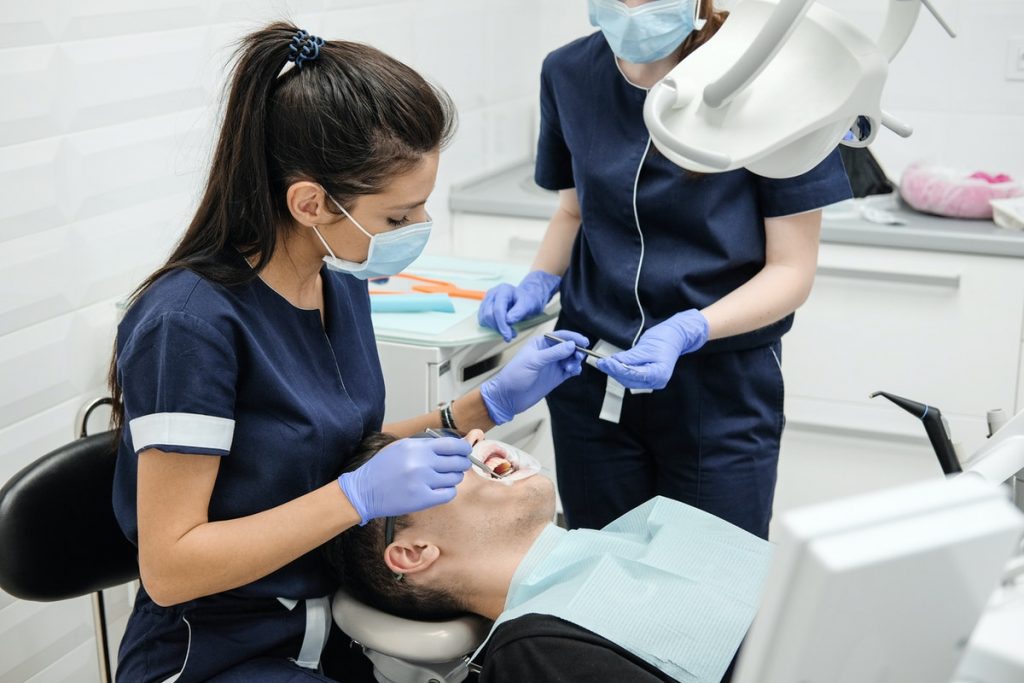Crossbite occurs when the top teeth are crowded towards the front of your mouth while the bottom teeth are crowded together in the back of your mouth. In this blog post, we will discuss what crossbite is, how it is diagnosed and how it can be treated.
What Is Crossbite?
Crossbite occurs when the top teeth are crowded towards the front of your mouth while the bottom teeth are crowded together in the back of your mouth. This causes a misalignment in which one group of teeth will be turned inward or inward.
The term “crossbite” refers to any type of less than “ideal” bite, including underbites (lower jaw is short), overbites (the upper jaw is too long), and anterior open bites (teeth don’t touch when you close). Crossbites cause shifting in your gums and jawbone.
How Does Crossbite Start?
If primary or baby teeth don’t come incorrectly, this could allow the permanent tooth to move into that space and cause a crossbite. As your permanent teeth replace your baby teeth, the new tooth may overlap or apply pressure on the area where the baby teeth were lost. This can result in the misalignment of those permanent teeth.
Symptoms of Crossbite
The symptoms of crossbite can vary depending on the severity of the problem. If you only experience some shifting, you probably won’t even be aware that it’s happening. However, if your teeth are severely misaligned, then the symptoms will be more noticeable, including:
- Teeth that don’t meet when closing or clenching
- Chewing or pain in areas where chewing is usually not felt (upper molars)
Crossbite can also cause some cosmetic problems, which may lead to other oral health problems. For example, crowding at one part of your mouth, there can be increased pressure over time on teeth and gums, causing pain and decay.
How Is A Crossbite Diagnosed?
A dentist might suspect that you have crossbite if they notice that your lower teeth are trying to push through the roof of your mouth. They will take an X-ray of the area to see how misaligned your teeth are. If there is a significant problem (meaning more than 1 mm difference between top and bottom), then another dentist might recommend taking an MRI, CT scan, or special X-ray that can be taken inside your mouth to determine which areas need to be treated first.
Causes of Crossbite
There are some things that can cause crossbite, including genetic factors. However, most often, it is caused by something called “bad oral habits.” If you have a tongue thrust or suck your thumb, this will more than likely cause or contribute to the development of crossbite. Other bad oral habits include:
- Mouth breathing
- Pacifier use
- Clenching your teeth (or jaw)
Bad habits of this type can be difficult to break, which is why early diagnosis and treatment are important.
How Is A Crossbite Treated?
Crossbite is usually treated with re-positioning appliances, including an arch expander. In the beginning, this is a removable appliance worn at night. The expander will slowly widen your upper jaw and stretch your arch, which allows more space for teeth to come incorrectly.

In some cases, a fixed brace may be recommended, which can straighten teeth while opening up that crowded arch. A fixed brace means that you won’t be able to remove it until the treatment is finished, but there are clear types of braces available today, which can make them much less noticeable than they used to be.
Whether you’re getting an expander or fixed braces, it’s important to remember that these appliances will need to be maintained throughout your life since your permanent teeth continue growing into adulthood. If not monitored regularly, a crossbite can reoccur, making it a problem that is not easily fixed.
There are a number of other treatments available today which make it much easier to correct a crossbite, including Invisalign and clear braces. These options can straighten teeth without the need for any wires or brackets — only a series of removable aligners that can be changed out as your correction progresses. This allows you to maintain good oral hygiene, eat the foods you want, and smile broadly without anyone suspecting anything’s been done because there’s no evidence of treatment!
In Conclusion…
Crossbite is characterized by misaligned teeth where one group is pushed towards the front of your mouth while another group falls behind, making them look smaller than they should be. As noted earlier, crossbite may cause pain, shifting, speech problems, and other complications that can lead to more serious health issues.
A diagnosis is typically made through an X-ray which shows how much your teeth are out of place. Once crossbite has been diagnosed, it may be treated with special appliances, including an expander or braces, depending on the severity of the problem.

